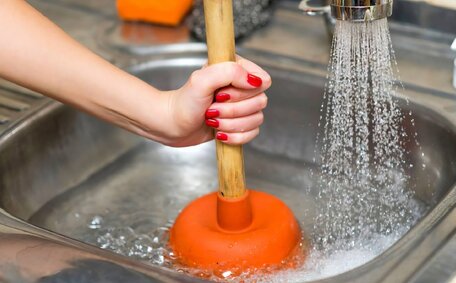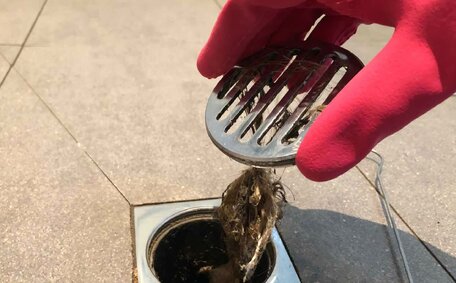What Is A Tankless Water Heater and How Is It Different From Traditional Water Heaters
Tankless water heaters, also known as on-demand or instant hot water systems, provide hot water directly without the use of a storage tank. Instead, the instant hot water system heats water directly as it flows through the unit. This system ensures a consistent hot water supply as soon as you turn on the tap, eliminating concerns about running out.
Tankless hot water systems can differ from storage tank water heaters in a few key ways:
- Size - Tankless systems are more compact due to their lack of a bulky storage tank.
- Efficiency - Tankless models typically achieve over 90% efficiency when providing hot water, outperforming traditional tank heaters’ 50-60% efficiency.
- Hot Water Flow - Tankless heaters guarantee a never-ending supply of hot water for as long as the tap remains open.
- Cost - Though the upfront cost can be up significantly, tankless water heaters work efficiently to save $100 or more per year on energy bills.
Tankless water heaters are known for their superior energy efficiency and endless hot water supply, although flow rates may differ across models.
Components and Operation Of A Tankless Water Heater
A tankless water heater comprises the following main components:
- Heat Exchanger - Transfers heat from the heating source (gas burner or electric element) into the water.
- Flow Sensor - Detects when the hot water tap turned on.
- Gas Burner or Electric Elements - Heats the water. Heat pump hot water heaters and gas models utilize natural gas or propane, enhancing the heating process of your water supply. Electric elements use electricity to manage gas flow and, like all water heaters use energy sources to supply hot water.
- Circuit Board - Controls the operation of the system including activating the burner or element when the flow sensor detects water flow.
When the hot water tap is turned on and the water is being used, this is what happens:
- The flow sensor detects water flow, potentially impacting water temperature, and sends a signal to the circuit board.
- The circuit board activates the gas burner or electric heating element.
- The heat exchanger transfers heat into the flowing cold water.
- The now-hot water flows through unit directly to the fixtures.
So, how tankless models function precisely? Unlike storage tank heaters that store hot water, tankless systems heat water instantly and only as it passes through the unit when needed. This provides endless hot water on demand without wasted standby energy.
Types of Tankless Water Heaters (Gas vs Electric)
Tankless water heaters are available in gas and electric models to suit various energy sources. Gas tankless water heaters use burners to heat the water as it flows through the unit, providing efficient heat transfer.
Gas models are capable of higher flow rates, often achieving up to 38 litres per minute, making them suitable for homes with significant hot water needs.
There are pros and cons to both gas and electric tankless water heaters:
- Gas heaters accommodate higher flow necessities, making them ideal for homes with several bathrooms or significant hot water demand.
- Electric models may be a better fit if natural gas is unavailable.
- The cost of operation will differ based on the local rates for gas and electric utilities.
- Electric tankless models often come with lower initial purchase costs than their gas counterparts.
When deciding between gas and electric options, consider your household’s hot water needs, energy source availability, and installation requirements so you can choose the optimal tankless water heater.
Benefits and Limitations of Tankless Water Heaters
Tankless water heaters offer several benefits compared to traditional hot water tank models:
- Long lifespan - Tankless heaters typically have a service life of around 20 years, surpassing that of traditional tank-based models.
- Energy savings - Tankless heaters can achieve up to 34% greater efficiency compared to tank-based models, potentially saving over $100 on energy bills annually.
- Continuous flow hot water - Delivers a continuous stream of hot water the moment you turn on the faucet.
However, tankless water heaters can have some limitations to consider:
- Higher initial expense - Tankless water systems can cost 2 to 3 times more for purchase and installation in comparison to their tank-based counterparts.
- Flow rate - Electric tankless models might struggle to supply sufficient hot water for high-demand households.
- Infrastructure requirements - Some models may necessitate upgrades to gas lines or electrical systems.
By weighing these pros and cons against your household’s needs, you can determine if a tankless water heater is the right choice to provide efficient and reliable hot water.
Sizing and Selecting The Right Tankless Water Heater
Selecting the right size tankless water heater is vital to fulfill your household’s hot water requirements. The key factors to consider, including how many fixtures need hot water, are:
- Hot Water Demand - Estimate your peak usage in gallons per minute based on the number of hot water fixtures running at once.
- Climate - Colder incoming groundwater will require a higher heating capacity.
- Available Energy Source - Factor in whether natural gas lines or sufficient electrical capacity is accessible.
Consider these factors to choose a heater with sufficient flow rate and heating capacity for multiple simultaneous outlets.
Installation location also impacts gas tankless unit performance.
Use manufacturer sizing charts or consult with a professional to select a tankless water heater that satisfies your household’s hot water demands.
Installing a Tankless Water Heater System
Installation of a tankless water heater involves several key steps and is best performed by a professional due to the complexity:
- Determine the appropriate size based on your household’s peak hot water demand and flow rates.
- Choose an appropriate location with adequate space, ventilation, gas and electrical connections.
- Acquire necessary permits and complete any required gas line upgrades or electrical panel upgrades.
- Install the unit, connecting hot and cold water pipes, along with gas or electrical lines, and the condensation drain.
- Install temperature and pressure relief valves and other safety devices as per local codes.
- Flush and test system operation.
A professional can ensure that your tankless hot water system is properly sized with the necessary infrastructure upgrades, safety mechanisms, and functionality testing. The total cost for a tankless water heater installation generally falls between $2,000 and $4,000, accounting for potential electrical or gas line upgrades.
Maintaining and Troubleshooting Tankless Water Heaters
To keep your tankless water heater operating at peak efficiency, follow these maintenance tips:
- Annually flush the heat exchanger to prevent scale accumulation due to hard water. Use a descaling solution specifically formulated for tankless units.
- Regularly inspect and clean the water filter, approximately every six months.
- Get a professional to check the burner and heat exchanger every three years.
Some common tankless water heater issues include:
- Temperature fluctuations - Inconsistencies like these might indicate heating elements that are failing, clogged filters, or scale in the heat exchanger, which may lead to a lack of hot water and the need for professional assistance.
- Low hot water pressure - Clean filters, check for clogged aerators at fixtures, or downsized piping issues.
- Error codes - Consult the owner’s manual and contact a technician for diagnosis and repairs.
While basic maintenance can resolve many problems, complex troubleshooting and repairs should be handled by qualified tankless water heater installation and service professionals to ensure safety and reliability.





